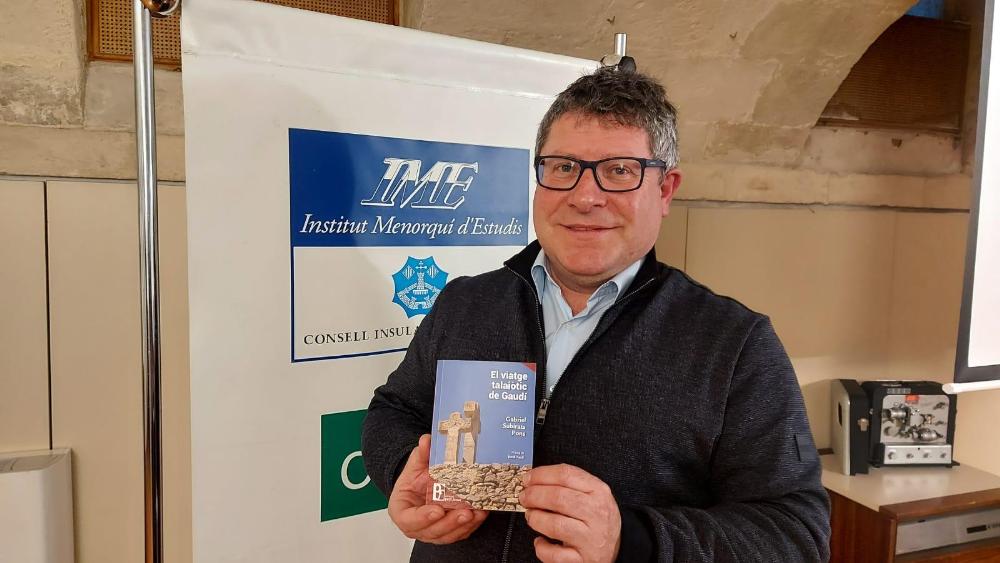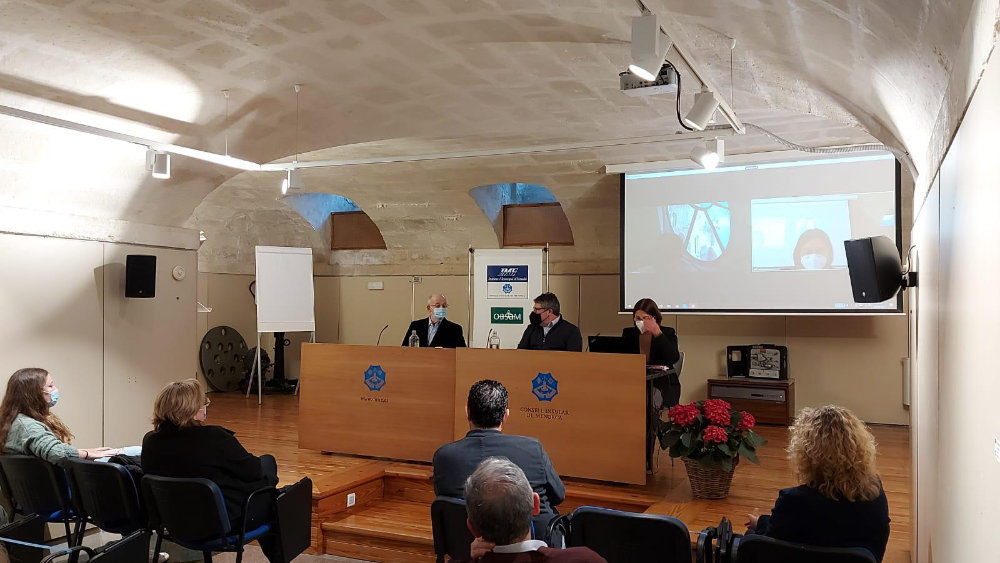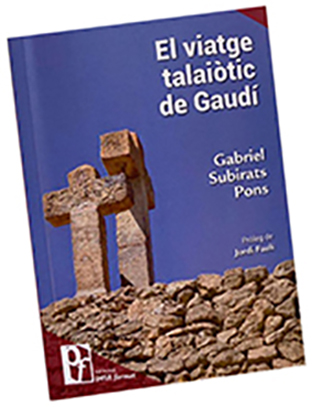 El viatge talaiòtic de Gaudí is the economist Gabriel Subirats (es Migjorn Gran, 1968) first novel, which was presented on April 22nd at the Institut Menorquí d’Estudis (IME). Subirats imagines the architect Antoni Gaudí’s visit to the island between May 1st and 7th of 1910, when he toured some of the most emblematic sites of the Talayotic culture accompanied by a group of interesting personalities of the time, linked to the Ateneu Científic, Literari i Artístic de Maó.
El viatge talaiòtic de Gaudí is the economist Gabriel Subirats (es Migjorn Gran, 1968) first novel, which was presented on April 22nd at the Institut Menorquí d’Estudis (IME). Subirats imagines the architect Antoni Gaudí’s visit to the island between May 1st and 7th of 1910, when he toured some of the most emblematic sites of the Talayotic culture accompanied by a group of interesting personalities of the time, linked to the Ateneu Científic, Literari i Artístic de Maó.
This historical novel, edited by the IME, is set at the beginning of the 20th century, an exciting time for Archeology in Menorca. Characters such as Francisco Hernández Sanz, promoter of the Ateneu de Maó, stand out in the story. Thanks to his research and his drawings, we can see the state, before the subsequent interventions, of many sites at the time.
What led you to write a novel about Gaudí? How did you discover his visit to Menorca?
I discovered the visit by chance, and with some intention, putting the words Gaudí and Menorca in the search engine. A very brief reference on the website of a Gaudí scholar, Josep M. Tarragona i Clarasó, aroused my curiosity. After informing myself about the times and the life and work of Gaudí, and noting, above all, certain peculiarities in Gaudí's work and some historical parallels, I decided to write it in the form of an imaginary story.
It seems that Gaudí's visit to Menorca is only recorded by the press in two articles. What real information do we have about his stay?
It really is an almost unpublished event, because there is the aforementioned note and little else: in El Bien Público, Gaudí and Rubió’s names appear in the Monte Toro steamer’s list of travelers, entering and leaving the port of Maó. Two clues hint that this trip was a sort of "getaway": Gaudí's delicate health, which required rest or gentle relaxation; and his aversion to the media. So today, just discovering the news is a pleasant surprise.
 "The large number of unexcavated sites turned the island's prehistoric past into a universe to be discovered, a world to be explored, full of questions to be addressed and hypotheses to be tested", as you say in the book. In your opinion, what are the most exciting contributions of that time?
"The large number of unexcavated sites turned the island's prehistoric past into a universe to be discovered, a world to be explored, full of questions to be addressed and hypotheses to be tested", as you say in the book. In your opinion, what are the most exciting contributions of that time?
I believe that the contributions of the time were preliminary, but essential for enhancing an extraordinary heritage in all senses. Let us bear in mind that Archeology had not yet developed as we know it, although the works of Armstrong, Ramis, Cartailhac or Hernández himself formed a first and basic theoretical compendium about our Talayotic culture; the most ambitious excavations and restoration works would come many years later.
In your fictionalized account, Gaudí visits the sites of Talatí de Dalt, Torre d'en Galmés, Rafal Rubí and the naveta des Tudons. What do you think impacted him the most about the Talayotic constructions? Is there any certainty about the places he visited?
Surely the dry stone technique, more than the supposed functionalities of the various constructions. If to that we add the spirituality of some elements (the taulas or the burial enclosures), the myths and social taboos of the time, then emotion and curiosity are served. In the press of the time I found this one reference: "[...] this afternoon, Antoni Gaudí and Joan Rubió went out to visit talayots [...]". I’m not a historian, but I'd like someone to find more information about his time here.
"That Saturday, May 7th, 1910, Antoni Gaudí i Cornet already knew very well that this trip would mean a revelation for his work," says the novel. Is there any evidence that Cyclopean constructions influenced the architects later work?
In 1914 Antoni Gaudí completed Park Güell with the so-called Cerro de las Tres Cruces, a kind of talayot ??that dominates the upper part of the garden city, which today is a public park. I think, and I am not the only one, that the Talayotic inspiration is evident. And we have more proof in the same park: an immense space under the square, built with columns and designed to collect rainwater, called, curiously, the Sala Hipóstila. Finally, and this is just speculation, but it has always caught my attention that if you placed the naveta de Tudons and Casa Milà side by side you would see a very similar stone finish.

The Ateneu de Maó and its members play a central role in the story, since they act as guides for Gaudí during his stay: "[...] that formidable team of people, extraordinarily motivated to learn how their ancestors lived and who were involved in preserving that enormous historical legacy. " What role did the Ateneu have in the study of Talayotic culture?
Its role was fundamental, without its intervention, the legacy that we are proud to show today would be in worse condition or would have been more difficult to rebuild. The contributions of the Ateneist hiking group, led by Francisco Hernández Sanz, are of a scientific nature (I mean they were of museum like descriptiveness and quality ), as well as clearly sensitizing, since they were concerned about telling the owners to conserve the sites clean of vegetation, which was a huge step in itself. The entity, which had been born five years earlier in order to spread scientific, artistic and literary knowledge, had taken over the Revista de Menorca. Hernández himself (professor of drawing, historian, archivist and curator of the Municipal Museum) directed the publication, which echoed the findings, research, studies or visits by foreign scholars. I dare to proclaim that these were the beginnings of the Talayotic spirit, as we conceive it today.
"Now I see it clearly! It is an island of stones ... where the stone is, at the same time, the island ...", Gaudí says at one point. Do you think he understood the odyssey of the stone that raised the Talayotic constructions?
More than the suffering, I think he must have been amazed imagining how they managed to find a method and technique that made their work easier and more efficient. What is also clear to me is that those people used their intelligence much better than we do, in hard times it seems that we only know how to increase our differences.